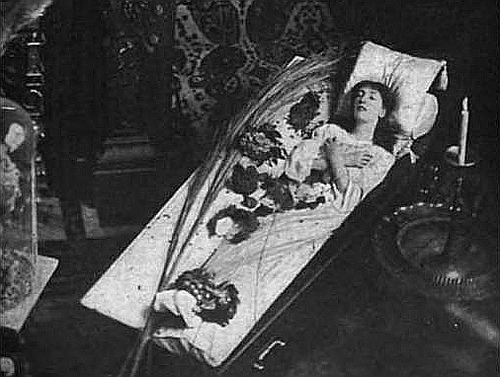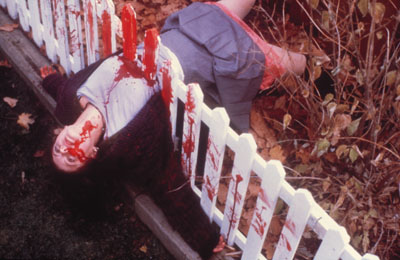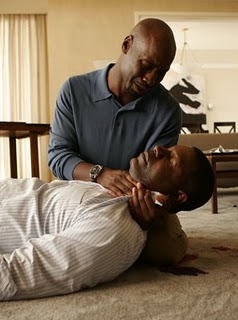Death Scene Photos Definition
Source:- Google.com.pkDeath is the cessation of all biological functions that sustain a living organism. Phenomena which commonly bring about deathinclude biological aging (senescence), predation, malnutrition, disease, suicide, murder and accidents or trauma resulting in terminal injury.Bodies of living organisms begin to decompose shortly after death. There is no scientific evidence that suggests consciousness survives the death of an organism.
In human societies, the nature of death and humanity's awareness of its own mortality has for millennia been a concern of the world's religious traditions and of philosophical inquiry. This includes belief in resurrection (associated with Abrahamic religions), reincarnation or rebirth (associated with Dharmic religions), or that consciousness permanently ceases to exist, known as oblivion (often associated with atheism).
Commemoration ceremonies after death may include various mourning or funeral practices. The physical remains of a person, commonly known as a corpse or body, are usually interred whole or cremated, though among the world's cultures there are a variety of other methods of mortuary disposal. In the English language, blessings directed towards a dead person include rest in peace, or its initialism RIP.
The most common cause of human deaths in the world is heart disease, followed by stroke and other cerebrovascular diseases, and in the third place lower respiratory infections.
Etymology
The word death comes from Old English, which in turn comes from Proto-Germanic *dauþaz (reconstructed by etymological analysis). This comes from the Proto-Indo-European stem *dheu- meaning the "Process, act, condition of dying".
Associated terms
The concept and symptoms of death, and varying degrees of delicacy used in discussion in public forums, have generated numerous scientific, legal, and socially acceptable terms or euphemisms for death. When a person has died, it is also said they have passed away, passed on, or expired, among numerous other socially accepted, religiously specific, slang, and irreverent terms. Bereft of life, the dead person is then a corpse, cadaver, a body, a set of remains, and finally a skeleton. The terms carrion and carcass can also be used, though these more often connote the remains of non-human animals.
As a polite reference to a dead person, it has become common practice to use the participle form of "decease", as in the deceased; the noun form is decedent. The ashes left after a cremation are sometimes referred to by the neologism cremains, a blend of "cremation" and "remains".
Diagnosis
The concept of death is a key to human understanding of the phenomenon. There are many scientific approaches to the concept. For example, brain death, as practiced in medical science, defines death as a point in time at which brain activity ceases.
One of the challenges in defining death is in distinguishing it from life. As a point in time, death would seem to refer to the moment at which life ends. However, determining when death has occurred requires drawing precise conceptual boundaries between life and death. This is problematic because there is little consensus over how to define life. This general problem applies to the particular challenge of defining death in the context of medicine.
It is possible to define life in terms of consciousness. When consciousness ceases, a living organism can be said to have died. One of the notable flaws in this approach, however, is that there are many organisms which are alive but probably not conscious (for example, single-celled organisms). Another problem is in defining consciousness, which has many different definitions given by modern scientists, psychologists and philosophers. Additionally, many religious traditions, including Abrahamic and Dharmic traditions, hold that death does not (or may not) entail the end of consciousness. In certain cultures, death is more of a process than a single event. It implies a slow shift from one spiritual state to another.
Other definitions for death focus on the character of cessation of something. In this context "death" describes merely the state where something has ceased, for example, life. Thus, the definition of "life" simultaneously defines death.










No comments:
Post a Comment